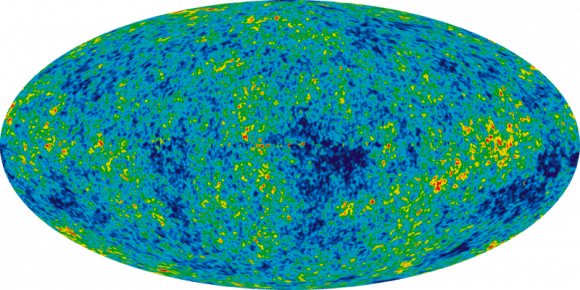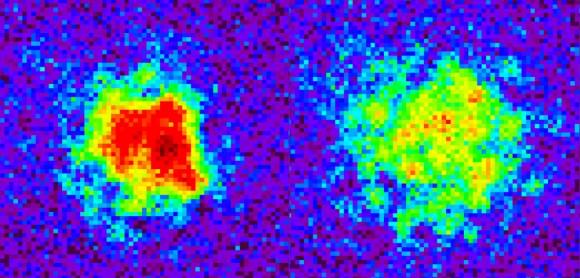An ultracold vacuum chamber ran a simulation of the early universe and came up with some interesting findings about how the environment looked shortly after the Big Bang occurred.
Specifically, the atoms clustered in patterns similar to the cosmic microwave background — believed to be the echo of the intense burst that formed the beginning of the universe. Scientists have mapped the CMB at progressively higher resolution using several telescopes, but this experiment is the first of its kind to show how structure evolved at the beginning of time as we understand it.
The Big Bang theory (not to be confused with the popular television show) is intended to describe the universe’s evolution. While many pundits say it shows how the universe came “from nothing”, the concordance cosmological model that describes the theory says nothing about where the universe came from. Instead, it focuses on applying two big physics models (general relativity and the standard model of particle physics). Read more about the Big Bang here.
CMB is, more simply stated, electromagnetic radiation that fills the Universe. Scientists believe it shows an echo of a time when the Universe was much smaller, hotter and denser, and filled to the brim with hydrogen plasma. The plasma and radiation surrounding it gradually cooled as the Universe grew bigger. (More information on the CMB is here.) At one time, the glow from the plasma was so dense that the Universe was opaque, but transparency increased as stable atoms formed. But the leftovers are still visible in the microwave range.

The new research used ultracold cesium atoms in a vacuum chamber at the University of Chicago. When the team cooled these atoms to a billionth of a degree above absolute zero (which is -459.67 degrees Fahrenheit, or -273.15 degrees Celsius), the structures they saw appeared very similar to the CMB.
By quenching the 10,000 atoms in the experiment to control how strongly the atoms interact with each other, they were able to generate a phenomenon that is, very roughly speaking, similar to how sound waves move in air.
“At this ultracold temperature, atoms get excited collectively,” stated Cheng Chin, a physics researcher at the University of Chicago who participated in the research. This phenomenon was first described by Russian physicist Andrei Sakharov, and is known as Sakharov acoustic oscillations.
So why is the experiment important? It allows us to more closely track what happened after the Big Bang.

The CMB is simply a frozen moment of time and is not evolving, requiring researchers to delve into the lab to figure out what is happening.
“In our simulation we can actually monitor the entire evolution of the Sakharov oscillations,” said Chen-Lung Hung, who led the research, earned his Ph.D. in 2011 at the University of Chicago, and is now at the California Institute of Technology.
Both Hung and Chin plan to do more work with the ultracold atoms. Future research directions could include things such as how black holes work, or how galaxies were formed.
You can read the published research online on Science‘s website.
Source: University of Chicago

